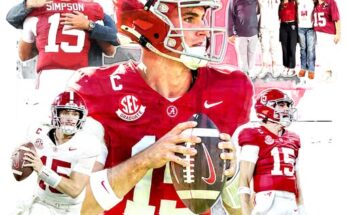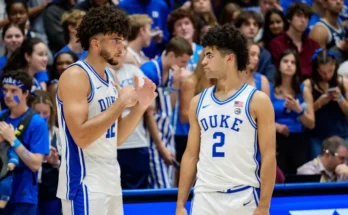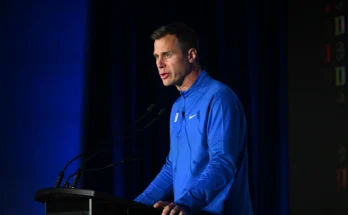One of Georgia’s best quarterbacks was left out of the top 90 in the twenty-first century.
The Georgia Bulldogs have long been a powerhouse in college football, known for producing some of the best quarterbacks in the game. From early Heisman candidates to NFL stars, the program has consistently featured elite signal-callers. However, one quarterback who helped shape the modern era of Georgia football was notably excluded from a ranking of the top 90 quarterbacks of the 21st century, a decision that has stirred debate among fans and analysts alike. In this article, we will explore why this quarterback, who made a lasting impact at Georgia, was overlooked, and why his omission is a disservice to his legacy.
The Legacy of Georgia Quarterbacks
The University of Georgia has had a rich history when it comes to producing quality quarterbacks. From the legendary Fran Tarkenton to the strong-arm prowess of Matthew Stafford, the Bulldogs have long been a breeding ground for top-tier talent under center. Quarterbacks such as Aaron Murray, the program’s all-time leader in passing yards and touchdowns, and Eric Zeier, who set numerous records in the early ’90s, have left indelible marks on Georgia football history.
Throughout the 21st century, the Bulldogs have seen a shift in their offensive philosophy, moving from a more traditional, run-heavy system to a passing attack that utilizes the quarterback’s arm more frequently. This evolution in style has seen quarterbacks who can both pass and run the ball with efficiency, such as dual-threat quarterbacks like Dak Prescott at Mississippi State and Deshaun Watson at Clemson, become highly regarded in college football.
The exclusion of one specific Georgia quarterback from a recent list of the top 90 quarterbacks of the 21st century stands as a glaring oversight. Despite his impressive statistics and notable achievements, this player did not make the cut, leaving many fans scratching their heads and questioning the criteria that led to his exclusion.
Who Was the Quarterback Left Out?
The quarterback in question is David Greene, the all-time leader in wins for Georgia Bulldogs quarterbacks with a remarkable 42-10 record. Greene’s career at Georgia spanned from 2001 to 2004, and in that time, he helped elevate the program into national prominence. His 2002 season, in particular, was one for the ages, leading the Bulldogs to an SEC Championship and an appearance in the BCS Sugar Bowl.
With more than 11,500 career passing yards and 72 touchdowns, Greene was a model of consistency and leadership. His calm under pressure and ability to lead his team in clutch moments made him beloved by Georgia fans, and he remains one of the most successful quarterbacks in the program’s history.
Why Was David Greene Omitted?
Despite his success, Greene was left out of the top 90 quarterbacks of the 21st century, a decision that continues to spark debate. The reasons for his omission could be multifaceted. One factor may be the era in which Greene played. College football has undergone significant changes since the early 2000s, particularly in the offensive game. The quarterback position has evolved from traditional pocket passers to more dynamic, dual-threat athletes who can both run and throw. As the style of play in college football has shifted, older quarterbacks like Greene, who thrived in a pro-style offense, have sometimes been overlooked in favor of those who fit the modern mold.
Additionally, the spotlight on quarterbacks from more high-profile programs, like Alabama’s Joe Namath, Ohio State’s Justin Fields, and Clemson’s Trevor Lawrence, may have eclipsed Greene’s accomplishments. Georgia, while a perennial contender, has often had to compete for attention with other SEC powerhouses, which can make it difficult for individual players to get the recognition they deserve.
A Statistical Breakdown of Greene’s Career
David Greene’s statistics speak for themselves. Over his four years as Georgia’s starting quarterback, he threw for 11,528 yards, with 72 touchdowns and just 26 interceptions. He led the Bulldogs to four consecutive bowl games, including an SEC Championship in 2002, and helped Georgia claim multiple top-10 finishes in the AP Poll.
His performance in big games was particularly noteworthy. In the 2003 Sugar Bowl, Greene threw for over 300 yards and three touchdowns, leading the Bulldogs to a convincing victory over Florida State. He also earned the MVP award in the 2003 Outback Bowl, where he threw for 342 yards and two touchdowns against Purdue.
When comparing Greene’s career to other quarterbacks from the 21st century who made the top 90 list, his numbers stack up favorably. He ranks among the top 50 quarterbacks in NCAA history in career passing yards and touchdowns, yet the omission of his name from this prestigious list is hard to explain.
The Cultural Impact on Georgia Fans
For Georgia fans, Greene’s exclusion from the top 90 list feels like an affront to his legacy. While he may not have won a national championship or posted the gaudy passing numbers that modern quarterbacks like Trevor Lawrence or Tua Tagovailoa have, Greene’s leadership and consistency were vital to Georgia’s success during his tenure.
For Bulldog fans, Greene is more than just a quarterback—he is a symbol of an era when the program was at the cusp of greatness, consistently competing with the best teams in the country. His leadership in a critical period of Georgia football history deserves more recognition, especially in light of his accomplishments.
The Evolution of the Quarterback Position
The quarterback position has changed significantly since Greene’s days in Athens. In the 2000s, college offenses were still predominantly pro-style, relying on pocket passers who could make quick decisions and deliver accurate throws. Today’s college offenses, however, are more spread-out, fast-paced, and often centered around dual-threat quarterbacks who can both pass and run the ball.
Greene’s ability to lead a traditional offense may not fit the mold of modern quarterbacks, but it was exactly what Georgia needed at the time. In a more modern system, Greene’s ability to read defenses and make precise throws would likely have allowed him to thrive in today’s pass-heavy environment.
Comparing Greene to Other Top 90 Quarterbacks
Many of the quarterbacks included in the top 90 list have had tremendous careers, but not all have had the same level of success or impact as Greene. Some were part of high-powered offenses that relied on fast-paced systems, while others benefitted from elite coaching and supporting casts.
Greene’s ability to succeed with a more traditional, balanced offense is a testament to his skill and football IQ. His poise in big moments, his leadership on and off the field, and his ability to deliver in clutch situations make him a strong case for inclusion in the top 90 quarterbacks of the 21st century.
While David Greene may not have been included in the top 90 quarterbacks of the 21st century, his legacy at Georgia is undeniable. He helped the Bulldogs to some of their most successful seasons and left an indelible mark on the program. The exclusion of Greene from this list highlights a broader issue in college football rankings: the tendency to overlook players whose success came in less flashy systems or under less media scrutiny. But for Georgia fans and those who followed his career, David Greene’s place in the history of Georgia football is firmly secured, and no list can change that.
Ultimately, Greene’s omission from the top 90 serves as a reminder of how important it is to consider all facets of a player’s career—not just statistics or championships—when evaluating their legacy. David Greene was, and remains, one of the best quarterbacks in Georgia football history, regardless of where he stands on a list.



